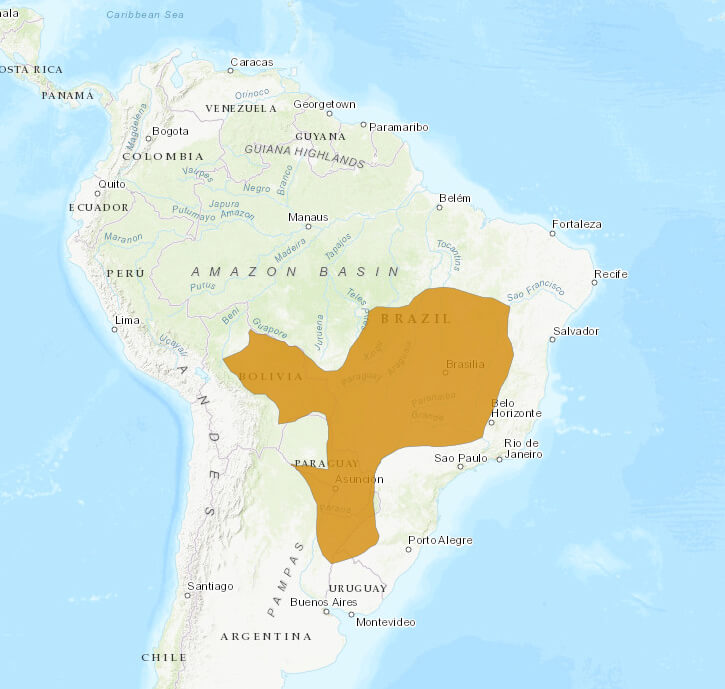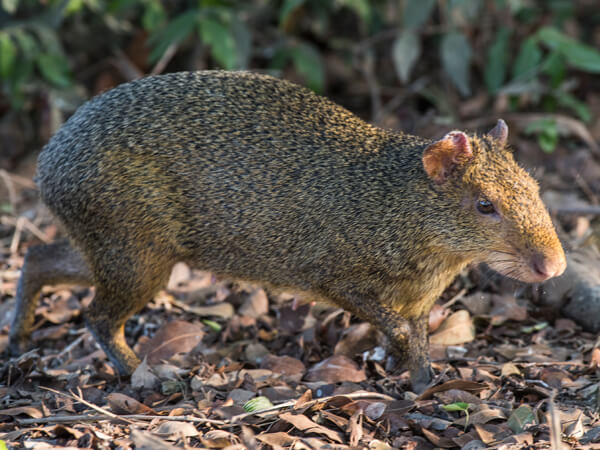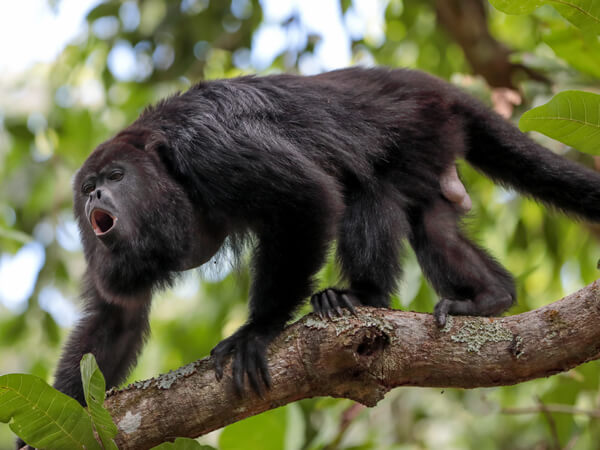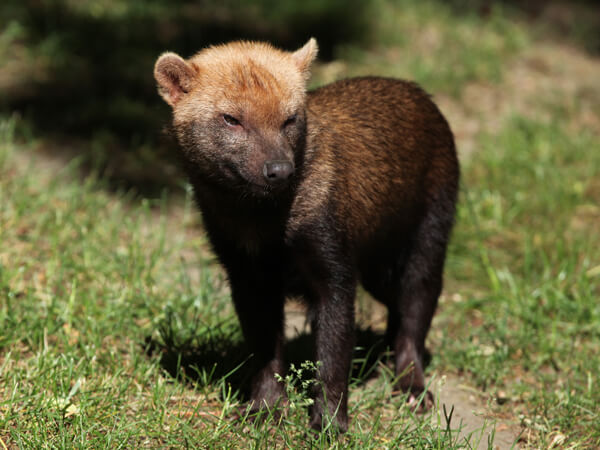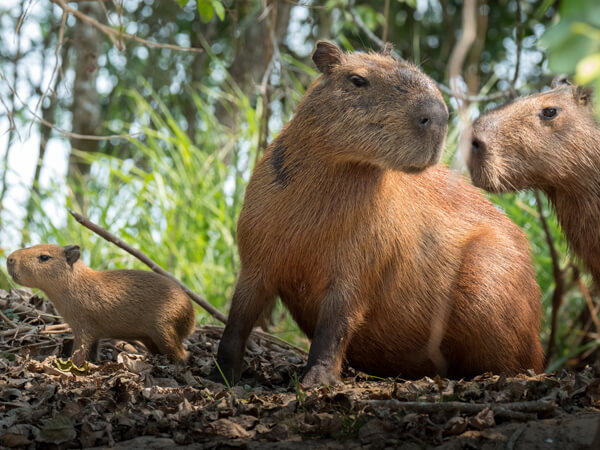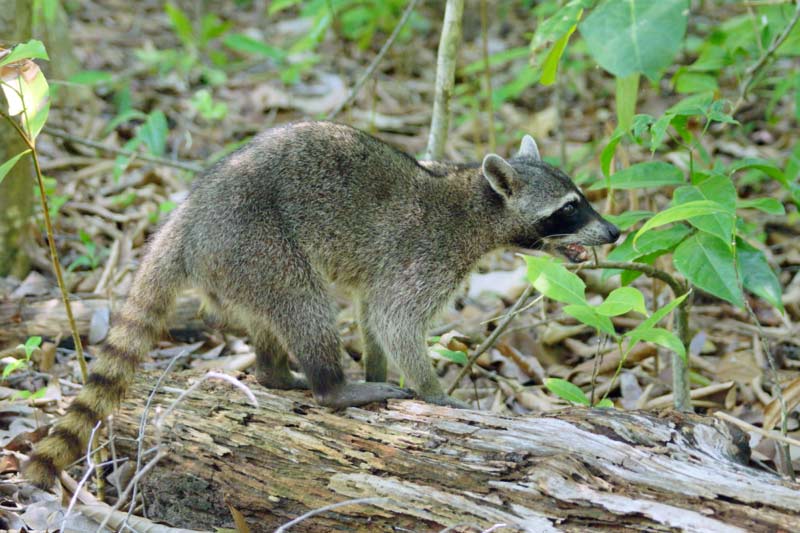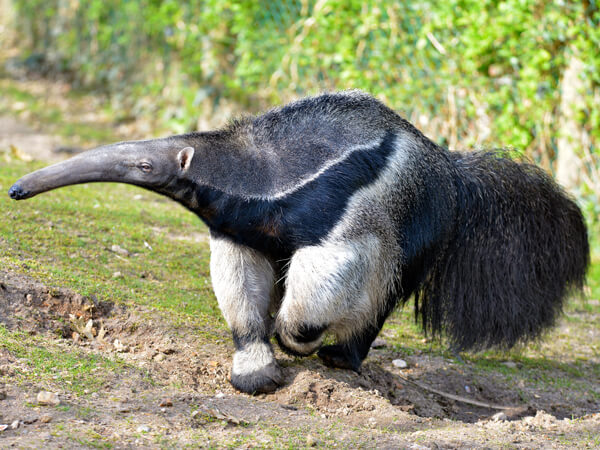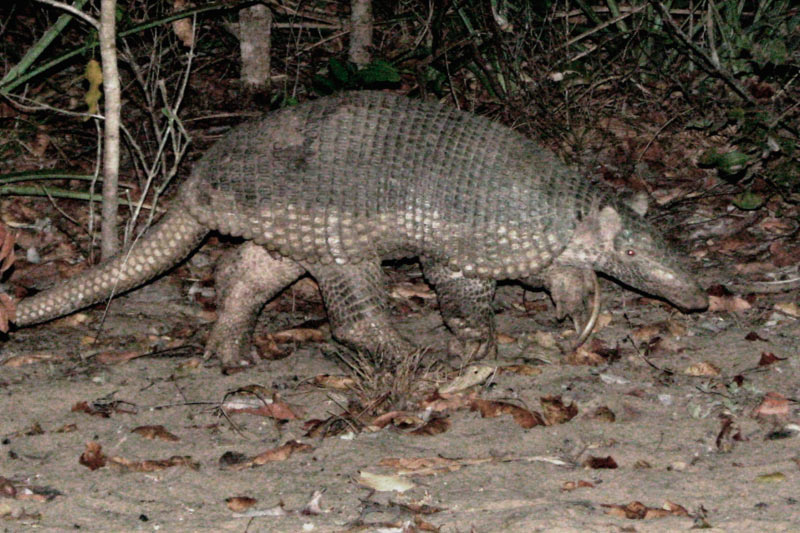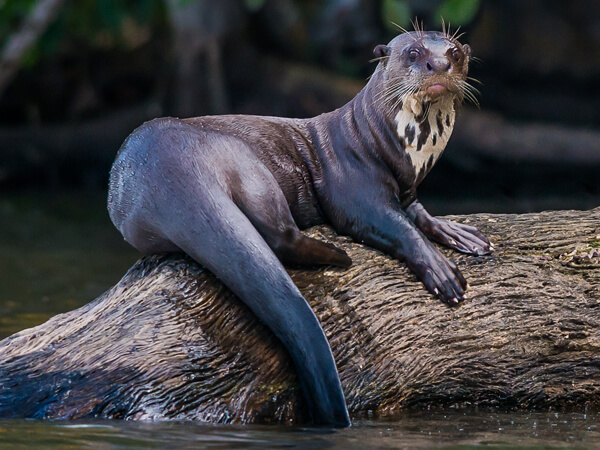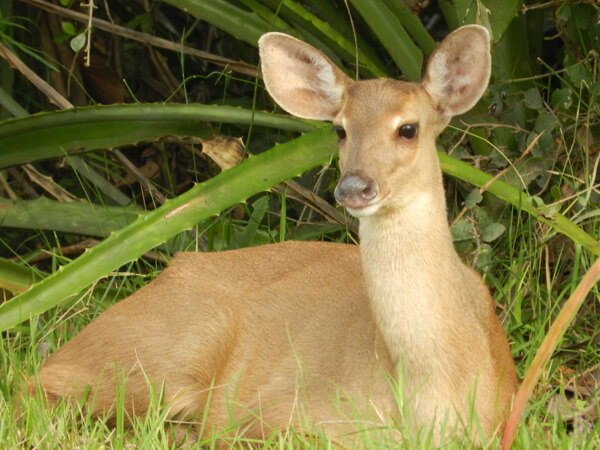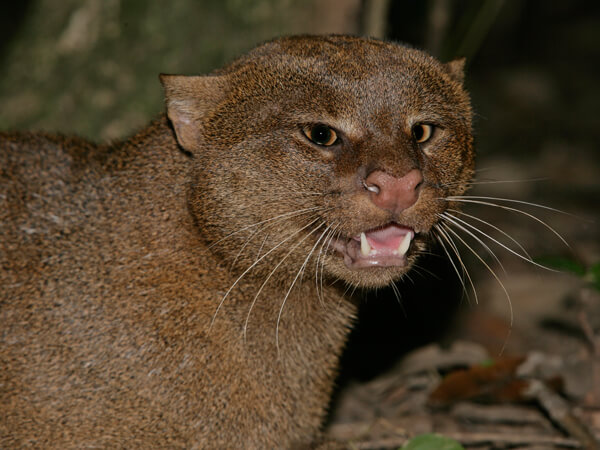The black howler is among the largest species of New World primates. Black howlers inhabit tropical forests and savannas of central Brazil. Males and females have very noticeable differences, such as their size and coloration of hair.
Click to learn more
Distribution
The black howler is found in northeastern Argentina, eastern Paraguay and Bolivia, as well as in the southwestern, south, and central regions of Brazil, in the biomes of the Cerrado, Pantanal and gaúcho Pampas.
Features
Black howlers are animals with a very apparent sexual dimorphism. While males are black, the females and young are a beige-brown color. Males may weigh seven kilograms on average, while females only reach up to 4.5 kilograms in weight. They have strong prehensile tails, and some parts of their bodies have no fur in order to better cling to branches. They often hang up only by their tails. They are among the largest of New World primates, measuring between 30 and 75 centimeters in height, while the tail is 40 to 80 centimeters long.
Behavior
The black howler monkeys are known for their strong vocals, which can be heard mainly in the morning from up to five kilometers away. It seems that these sounds are used as a way to delineate territories between groups. They live in groups of three to eight individuals, with some groups eventually reaching up to 19 individuals. Each group has a dominant male, some females and some young. They are polygamous, with males and females mating with more than one individual of the same group, or other groups. Female polygamy may be practiced in order to increase the fertility rate, or to confuse the paternity of aggressive males. They are mostly arboreal, and spend little time on the ground – only to drink water or move between forest fragments. Their territories are small, typically five to 45 hectares.
Food
The diet of the black howler monkeys is predominantly composed of leaves. They will also consume buds, flowers and fruits: this flexibility in the diet helps the species to withstand changes in the environment. Their low energy content folivore diet makes them less active than other primates.
Reproduction
Gestation takes 180 to 220 days and there is not much seasonality. Usually one cub is born, and is carried on the mother’s back during the first months of life.
Conservation
Black howler monkeys are considered of “low concern” by the IUCN, but “nearly threatened” according to the national list of the ICMBio. The main threat to the species is loss of habitat.

